Pizza is a popular delicacy that’s believed to have originated in Naples, Italy, around the 1800s. Even though there are pizza lovers everywhere, most people focus on the toppings and the sauce, leaving behind the essential pizza component – the crust.
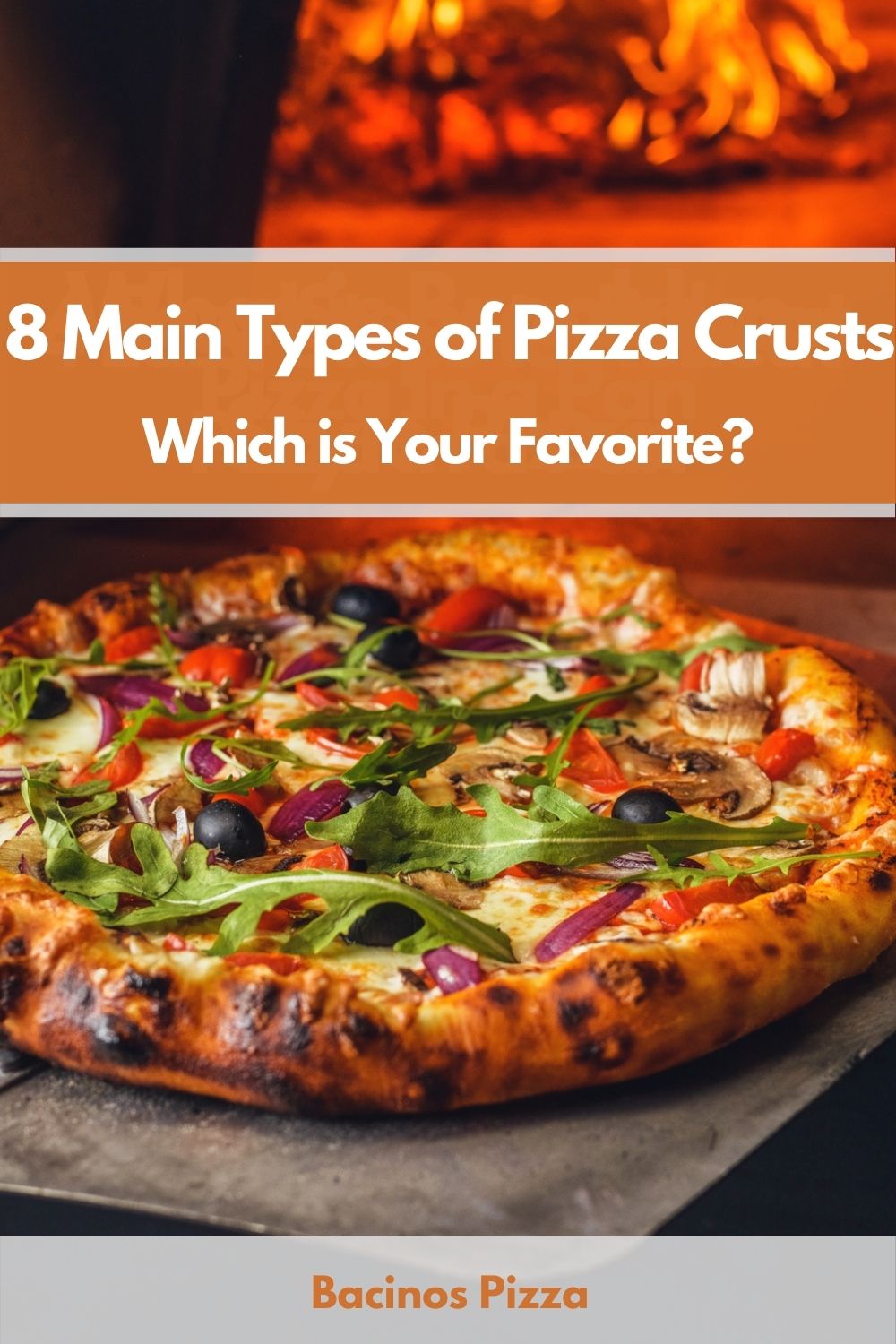
The crust is the foundation of every pizza slice. It delineates the taste, density, and texture of the pizza. So, today I’m here to help you understand the different types of pizza crusts you might want to try.
Before we move further, you’ll want to note that pizza crusts can either be thin or thick. We’ll see the available choices in each category.
Thin Crust
For the most part, the thin crust is the go-to choice for pizza lovers. The thin-crust pizza varieties include:
1-3. Neapolitan Crust
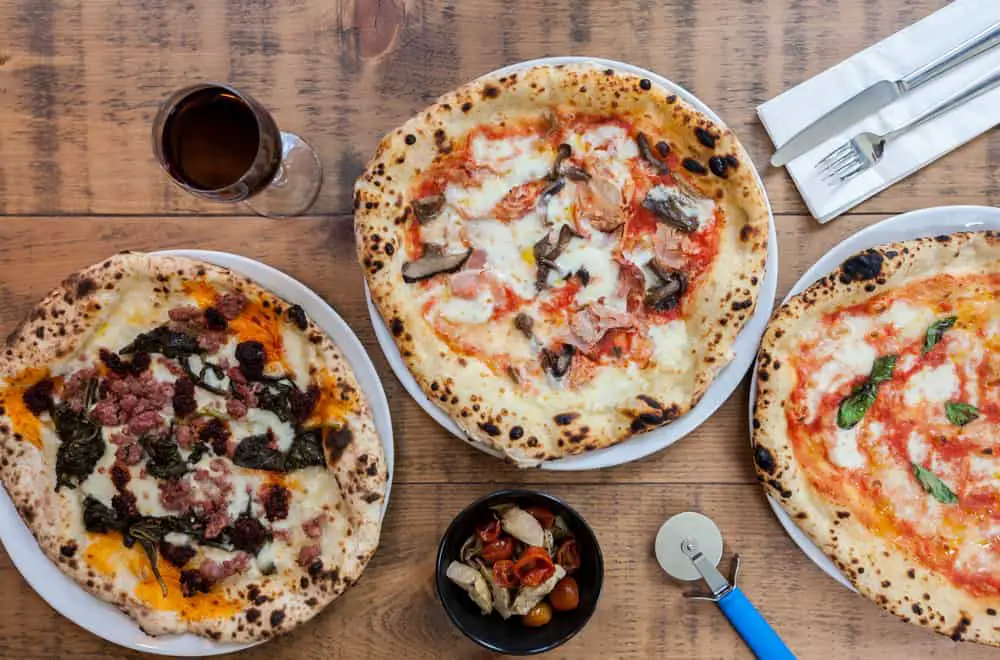
This is the original Italian pizza crust. It’s the founding type of pizza that originated from Naples, Italy, in the 18th century. Neapolitan pizza was responsible for popularizing pizza in the global arena.
Today, there are different variations of Neapolitan pizza crust, including pizza Margherita, pizza Marinara, and pizza Margherita extra. An authentic Neapolitan pizza is made of just flour, yeast, salt, and water. The traditional toppings are tomatoes, fresh mozzarella, olive oil, basil leaves, and oregano.
Neapolitan pizza can’t handle too many toppings because it has a thin crust. No machines are involved when making Neapolitan pizza. The dough is hand-kneaded and should be 1/3cm thick at the center and 35cm in diameter.
The dough is baked in a wood-fired, domed oven at temperatures above 800 degrees Fahrenheit. To make it as light and slightly crispy as the authentic Neapolitan pizza, it should be baked for only 90 seconds.
Styles seen in most local menus are the pizza margherita and pizza marinara. The former features tomatoes, mozzarella, and basil, whereas the latter includes tomatoes, garlic, and oregano.
4. New York Crust
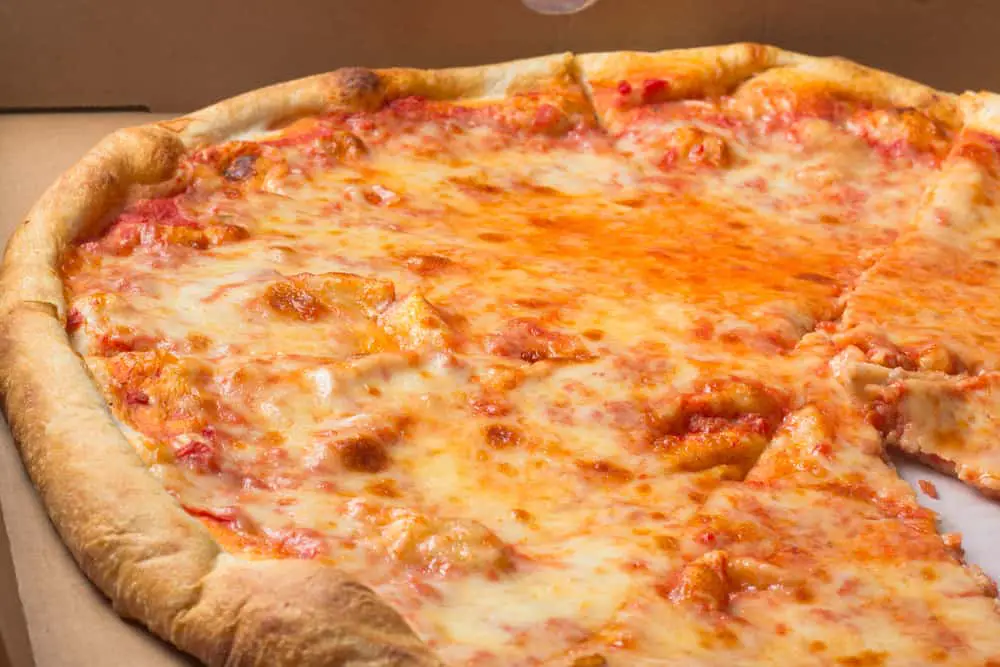
The big, wide-wedged New York pizza crust is often seen in films and TV shows. It’s the crème-de-le-crème of all pizza styles out there. And it’s been around since the 20th century.
New York-style pizza uses oil and sugar, in addition to the standard dough components like yeast, flour, salt, and water. Adding oil and sugar allows the crust to brown evenly when baked at a lower temperature.
It’s baked for a considerably longer period, usually around 15-20 minutes. When done, the crust is soft on the inside and crispy on the outside.
New York-style pizza slices are large and have a floppy finish. As a result, pizza eaters can fold the slice and eat with ease.
Note that the New York pizza crust uses high gluten flour. That’s how it gets its unique texture and flavor.
5. St. Louis Crust
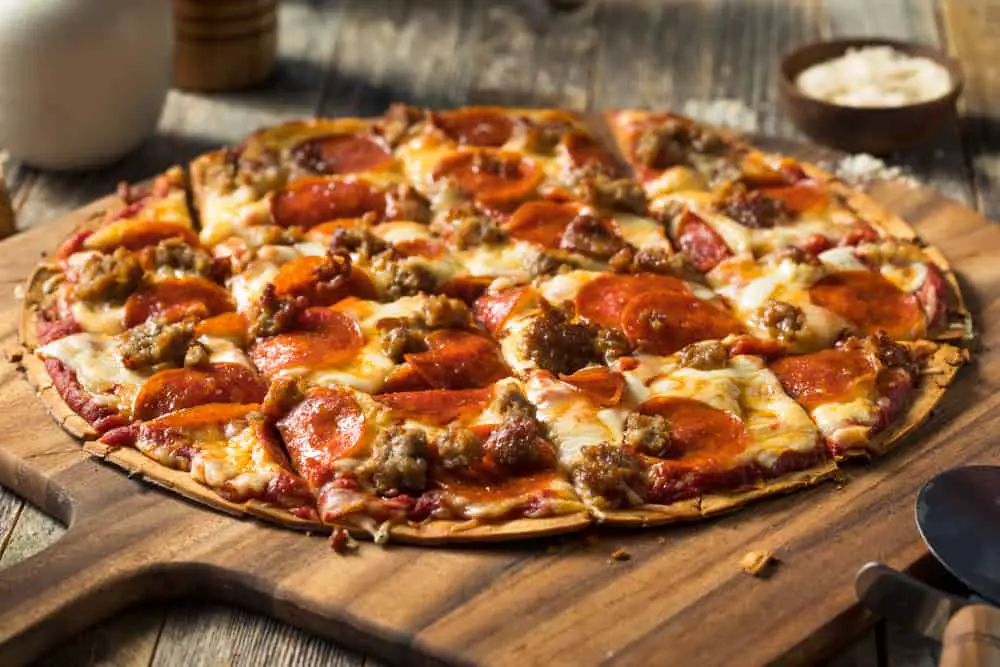
You’ll find this in the Midwestern city of St. Louis, Missouri, and neighboring areas. St. Louis pizza styles aren’t cut into triangular slices. Instead, they’re cut into three- or four-inch squares or rectangles.
In the Midwest pizza parlors and bars, this cutting style is known as party or tavern cut. St. Louis pizza has a ton of unique characteristics.
It’s made of unleavened dough (dough without yeast) instead of leavened New York-style pizza. The result is a very thin, round, and cracker-like crust.
Basically, St. Louis crust can’t be folded easily. It’s the perfect choice for parties and gatherings. And it’s best when served in rectangular slices rather than pie pieces.
The common ingredient on top of St. Louis pizza is Provel processed cheese. This is a blend of provolone, cheddar, and swiss.
Thick Crust
Thick crusts are those that handle much more toppings with crumbling to pieces. The thick-crust pizza styles include:
6. Sicilian Crust
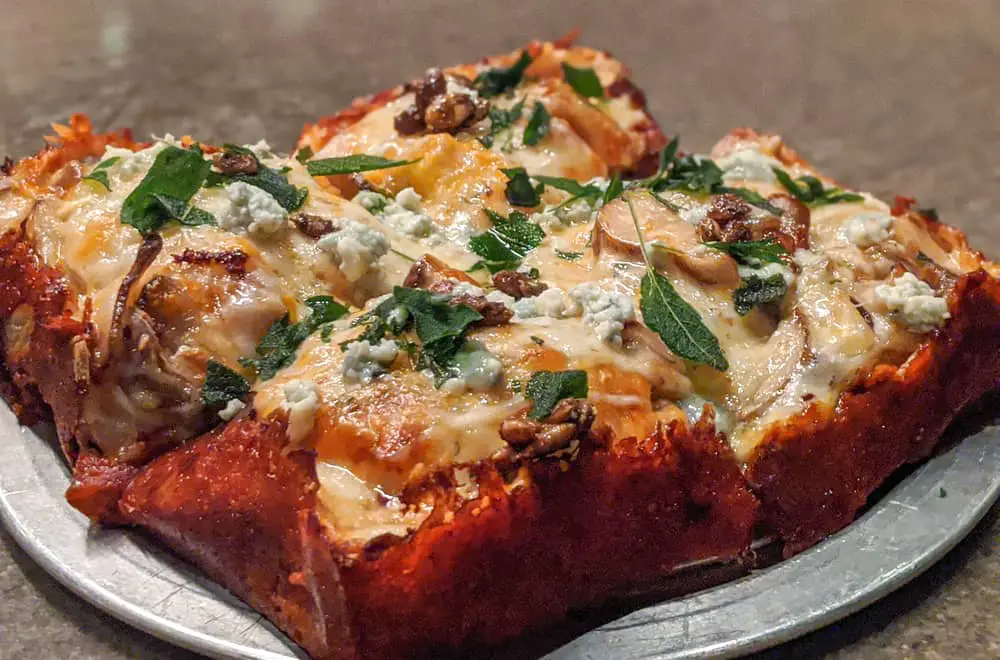
This is also known as Detroit-style pizza. Sicilian immigrants are said to have brought Sicilian-style pizzas to the United States. This type of pizza crust has gained immense popularity in large metro areas, including the upper Midwest and East coast.
The Sicilian style dough contains all-purpose or bread flour, instant yeast, olive oil, water, and salt. Its crust has rich layers of tomato sauce coupled with mozzarella cheese and garlic. If baked in a square shape, the Sicilian crust gets slightly thinner and chewier.
The Sicilian crust is the deep-dish style pizza that’s slightly over an inch in thickness. In New York, you’ll find that Sicilian pizzas are an inch and a half thick. It’s often shaped into rectangular cuts. And it has a higher crust to topping ratio.
The crust is also fluffy because it’s made of dough that contains a higher amount of water and oil. To create this pizza crust, pizza bakers use a deep baking sheet coated with olive oil.
A well-oiled baking sheet gives the crust’s bottom and edges an almost fried texture. You’ll love the Detroit-style pizza’s crispy bottom and fluffy interior.
7. Chicago-Style Deep Dish Crust
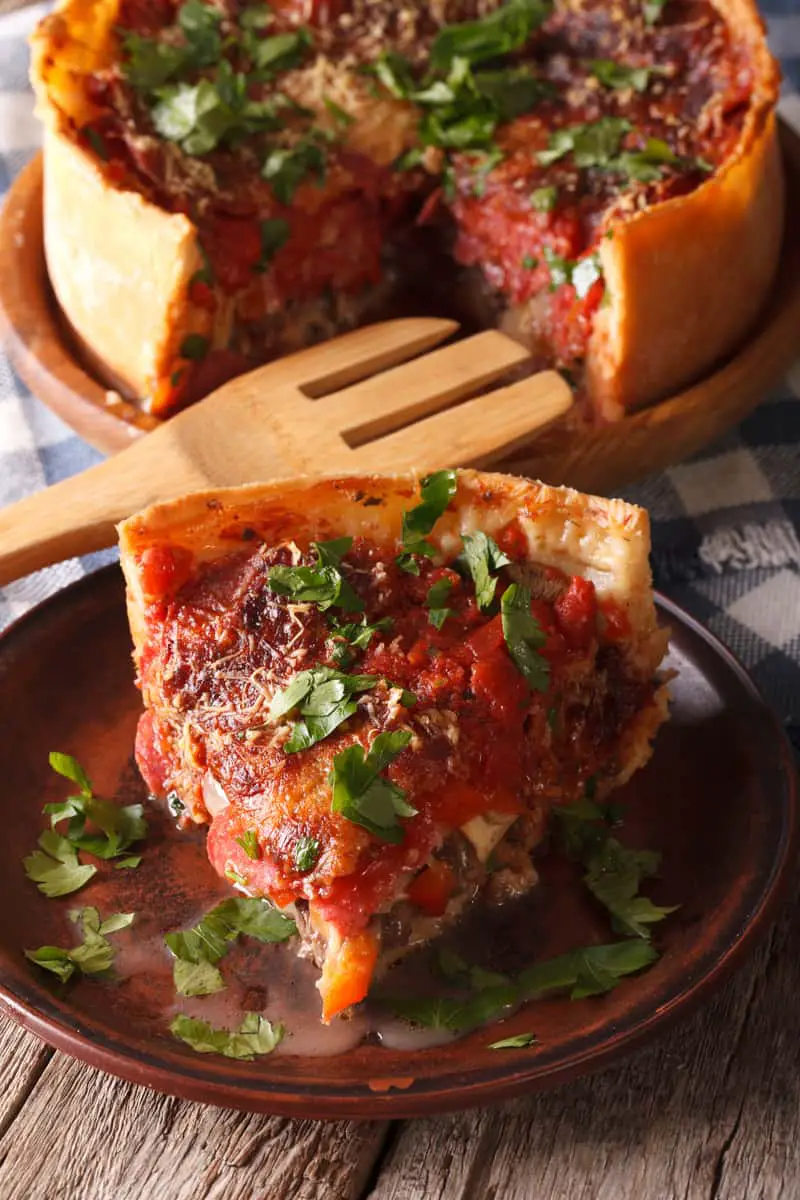
This crust style is highly dense, with a crust that’s up to two inches deep. Because the crust is much deeper, it has more than enough space to hold an enormous amount of gooey cheese, sauce, and endless toppings. And, unlike other pizzas that are baked on a flat pan, the Chicago-style crust is baked in an iron skillet or a round, steel pan. This allows the dough to crisp to perfection.
Also, the pan is oiled in order to create a fried effect on the outside of the crust and a buttery flavor. It takes around 30-45 minutes to make the Chicago-style deep dish pizza crust. This is because it has a thick layer of toppings. For this type of pizza crust, the toppings are assembled in an upside-down order. If cheese is used as the top layer, it could be burnt.
Besides the regular wheat flour, the dough may have semolina, cornmeal, or food coloring. This is to give the crust a unique yellowish tone. To enhance the taste, flavor, and texture, you might want to sprinkle some Parmesan cheese. Other toppings you may wish to use include onions, bell paper, and mushrooms.
When you order the Chicago-style pizza crust for carry-out or delivery, it will arrive uncut. If the pizza is cut in advance, moisture from the sauce and toppings may soak into the crust. This will cause the pie to become soggy and lose its crispiness.
8. Pan Pizza Crust
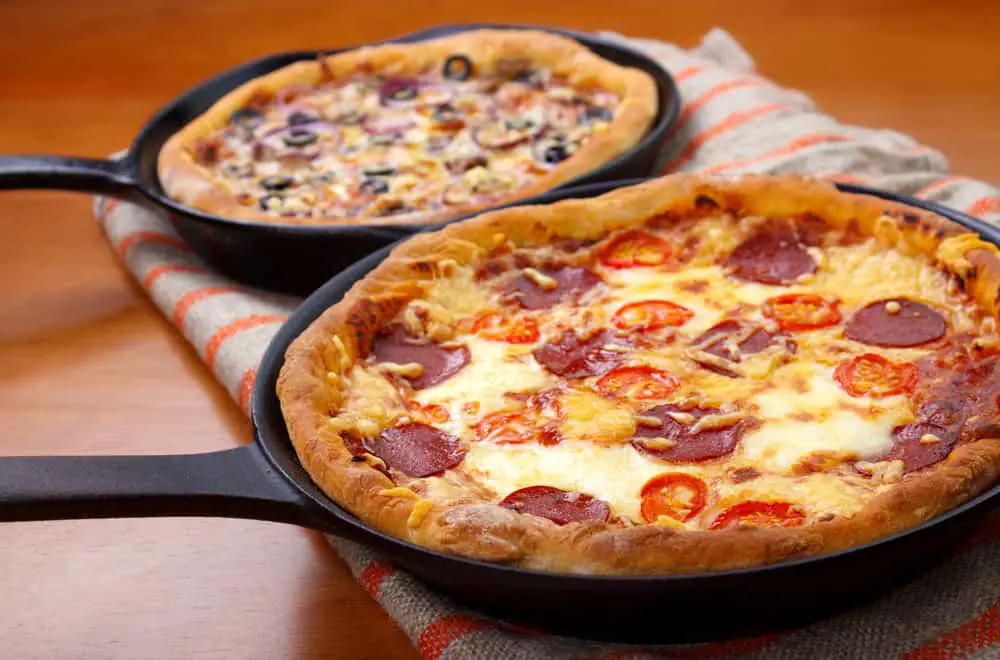
Domino’s freshly made pan-baked pizza is about 1/2 inch less thick than the thick crust pizza varieties. It’s more or less the same as the Chicago-style pizza and is more popular in North America. This pan-baked pizza is deliciously soft, with extra cheese that adds a buttery taste.
You’ll want to know that the pan pizza crust isn’t thin. Being just half an inch less than thick crust pizza varieties, it happily falls in the middle slot. In fact, this type of pizza crust offers a perfect balance of size for most pizza lovers. This pizza tends to be crunchier on the bottom, softer on the inside, and chewier in the center.
The traditional pan pizza forms the perfect foundation for custom flavors. That’s why this crust is a universal customer favorite. To make this crust, the thick dough is pressed into a pizza pan that’s coated with oil. The dough is then left to sit directly under the tomato sauce.
On top of the tomato sauce are the cheese and toppings. Placing the cheese and toppings atop the sauce helps prevent the crust from getting soggy. When done correctly, the sides and bottoms of the crust should become fried and crispy. Note that Pizza Hut made the pizza pan crust popular around the world in the 1960s.
Traditional vs. Pan Crust Pizza
There are three main differences between traditional and pan crust pizza. Here are their differences:
Thickness
The pan crust pizza is cooked in a recessed pan or cast-iron skillet. For that reason, the crust rises higher, just like it does with deep dish pizza.
The traditional crust pizza has more room to expand outward. As such, it’ll expand without restriction and turn out thinner than the pan crust.
Cooking Time
The pan crust pizza requires a lower cooking time. The reason is that the sides and bottom of the crust absorb more heat quickly since they come into contact with the recessed pan or cast-iron skillet.
As for the traditional crust, the flat pan or brick comes into contact with only the bottom of the crust. The crust absorbs heat slowly, ultimately increasing the cooking time.
Texture
As far as the texture is concerned, the traditional pizza crust is thinner. As a result, it appears to be softer on the inside and crunchier on the bottom.
With the pan crust, the dough takes up a lot of space on the pan so that the actual crust will be fluffier and chewier. The crust’s thin outer surface may get crispy if cooked longer. However, the inside will remain spongy, resulting in more filling slices.
Conclusion
Clearly, there are many pizza crust varieties out there. I didn’t cover everything in this list, and there are many other stellar pizza crust options to choose from.
The key to selecting the perfect crust is to understand your own preferences. So, take a moment between bites to understand what makes up each crust before deciding on which one to choose as your staple.


James is one of our undergraduate writers that grew up loving good food and pizza. When it comes to food, James is not a stranger to different styles of pizza! Because of his interest in different varieties and cultures of pizza, he decided to work with our team sharing his love for pizza.